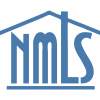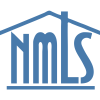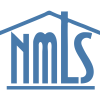NMLS At 15 Years: How the SAFE Act Transformed a Market
By CSBS President and CEO Jim Cooper
 Fifteen years ago, Congress transformed the mortgage industry by mandating the use of a technology platform created by state financial regulators. Today, that platform allows millions of Americans to make financial decisions and transactions with confidence. Whether they’re obtaining a mortgage to make what is likely their largest lifetime purchase or sending money to a friend, consumers can be assured that the companies they work with are licensed and supervised by a network of state financial regulators.
Fifteen years ago, Congress transformed the mortgage industry by mandating the use of a technology platform created by state financial regulators. Today, that platform allows millions of Americans to make financial decisions and transactions with confidence. Whether they’re obtaining a mortgage to make what is likely their largest lifetime purchase or sending money to a friend, consumers can be assured that the companies they work with are licensed and supervised by a network of state financial regulators.
The platform’s success tells a compelling story about both the value of states’ local authority in financial services and the importance of technology in financial regulation.
In 2003, state financial regulators recognized a concerning pattern of fraud and abuse in their states. At the time, many states regulated mortgage loan originators. While many mortgage loan originators were honest and trustworthy, some were taking advantage of a lack of consistent oversight and standards to commit harmful acts. Some mortgage loan originators illegally profited from the mortgages they processed or even had criminal records. Because there was no easy way to track and oversee these bad actors when caught, they could easily cross the border to another state to continue making fraudulent loans and go unnoticed.
To rectify this gap in regulation, state financial regulators conceived a multi-state licensing system modeled after the securities industry. The solution posed some risk, which is uneasy territory for any financial regulator. It required trust, time and money – and a lot of faith in each other. But they knew they had to act to address consumer harm.
States worked together from 2003 to 2006 to create uniform mortgage license application forms. A year later, they began building a common licensing platform that states could voluntarily use to better manage and monitor licensed mortgage lenders, mortgage brokers and individual mortgage loan originators doing business in one or multiple states. That became the Nationwide Mortgage Licensing System, or NMLS, which launched in January 2008.
While the states were launching NMLS in early 2008, Congress was working on legislation to improve oversight of the mortgage industry. The Secure and Fair Enforcement for Mortgage Licensing Act, or SAFE Act, became law eight months later on July 30, 2008. The SAFE Act gave all states two years to pass legislation setting minimum professional standards that required residential mortgage loan originators to be licensed or registered through NMLS and for state agencies to participate in and share licensing information through NMLS. It also required mortgage loan originators to complete a minimum of 20 hours of pre-licensure education, eight hours of annual continuing education, pass a national mortgage test and demonstrate character and financial fitness through a credit report and FBI criminal background check – all managed and tracked through NMLS. The states met the implementation deadline with time to spare.
The SAFE Act and the state laws implementing the SAFE Act are powerful tools used by regulators to improve consumer protection and maintain the professionalism of state-regulated financial services industries. Licensees are regularly examined for compliance, and since the NMLS was launched, the states have taken numerous enforcement actions against companies and individuals trying to evade state licensing requirements. Just last year, 42 states took joint action against a continuing education provider and hundreds of mortgage loan officers who falsely claimed to have completed continuing education.
NMLS started as a means of improving mortgage regulation. Since then, it has become a much broader platform for improved regulation and consumer protection across a range of financial services. In 2012, we changed the “M” from “Mortgage” to “Multistate” to reflect its expanded scope of serving as the state licensing platform for debt, consumer finance and money services businesses industries. Last year, nearly 621,000 mortgage loan originators were licensed or registered through NMLS. An additional 24,700 mortgage companies and more than 8,400 state-licensed financial services companies, including consumer lenders, debt collection companies and payments companies, are licensed in NMLS.
NMLS is more than just a licensing and registration platform. Its success inspired states to launch a strategy called Networked Supervision to increase state collaboration through standardization and greater use of technology. The latest extension of NMLS leverages technology to support regulatory collaboration. This platform, the State Examination System, enables multiple states to conduct a single, comprehensive exam of a licensed company. Institutions work with one point of contact and experience fewer exams, and regulators can deploy their supervisory staff more effectively.
NMLS and its supervisory component the State Examination System harmonize and automate processes, reducing confusion and streamlining work for institutions. In turn, state regulators are gathering data from these systems to help them better manage risk in the financial services companies they oversee.
Finally, the public can view actions taken against specific licensed companies and individuals by state regulators and the Consumer Financial Protection Bureau through NMLS Consumer Access. Last year, the site received more than 196.5 million pageviews from more than 8.4 million visitors.
Technology has moved at a fast clip over the past 15 years. Because of the states’ decision to build and launch NMLS and Congress’s decision to enact the SAFE Act, financial regulation has moved with it. The result is that Americans can have greater trust and certainty in the financial services providers that they rely on to help them achieve their financial goals.
- Press Releases
State Supervisors Urge Licensees to Prepare Early for NMLS Annual Renewal
Oct 23, 2025
- Blog post
Coming Sept. 20: A Better Licensing Experience for State-Licensed MLOs
Sep 17, 2025
- Blog post
Coming Sept. 20: The New NMLS Resource Center
Sep 8, 2025
Get Updates
Subscribe to CSBS
Stay up to date with the CSBS newsletter


